#global temperature variations
Explore tagged Tumblr posts
Text
Ignore The Planet At Your Own Risk
Can anybody honestly still deny that climate change is real, that what the scientists have been predicting for over half a century now is here? Turn on the news, watch the weather reports from ‘round the globe, or just … step outside and try to take a deep breath! Thom Hartmann, author of a number of excellent books, ponders on how much longer the politicians can continue to talk out of both…

View On WordPress
0 notes
Text
How will climate change affect Antarctica? Will some parts become warmer while others remain frozen?
Climate change is already having significant effects on Antarctica, though its impact varies depending on the region. The overall warming of the planet due to human activities is leading to noticeable changes in both temperature and ice stability across the continent. Here's a detailed explanation:
#Climate Change#Antarctica Warming#Polar Regions#Global Warming#Frozen Antarctica#Environmental Impact#Antarctic Ice Melt#Polar Climate Shifts#Temperature Variations#Antarctic Ecosystem
0 notes
Text
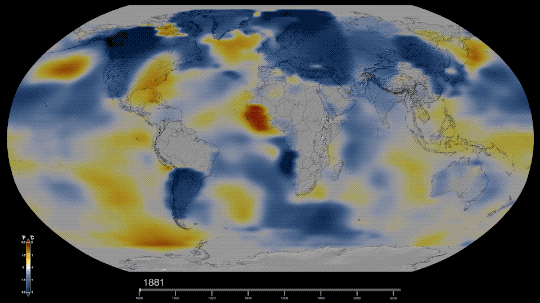
Six Answers to Questions You’re Too Embarrassed to Ask about the Hottest Year on Record
You may have seen the news that 2023 was the hottest year in NASA’s record, continuing a trend of warming global temperatures. But have you ever wondered what in the world that actually means and how we know?
We talked to some of our climate scientists to get clarity on what a temperature record is, what happened in 2023, and what we can expect to happen in the future… so you don’t have to!
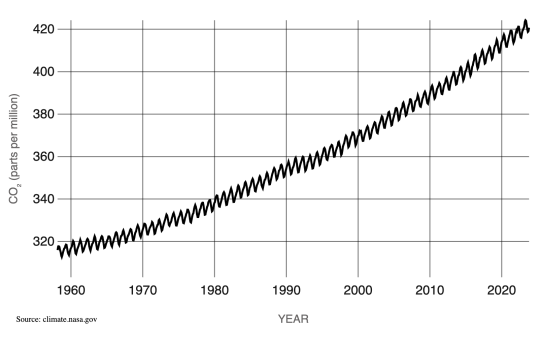
1. Why was 2023 the warmest year on record?
The short answer: Human activities. The release of greenhouse gases like carbon dioxide and methane into the atmosphere trap more heat near Earth’s surface, raising global temperatures. This is responsible for the decades-long warming trend we’re living through.
But this year’s record wasn’t just because of human activities. The last few years, we’ve been experiencing the cooler phase of a natural pattern of Pacific Ocean temperatures called the El Niño Southern Oscillation (ENSO). This phase, known as La Niña, tends to cool temperatures slightly around the world. In mid-2023, we started to shift into the warmer phase, known as El Niño. The shift ENSO brought, combined with overall human-driven warming and other factors we’re continuing to study, pushed 2023 to a new record high temperature.

2. So will every year be a record now?
Almost certainly not. Although the overall trend in annual temperatures is warmer, there’s some year-to-year variation, like ENSO we mentioned above.
Think about Texas and Minnesota. On the whole, Texas is warmer than Minnesota. But some days, stormy weather could bring cooler temperatures to Texas while Minnesota is suffering through a local heat wave. On those days, the weather in Minnesota could be warmer than the weather in Texas. That doesn’t mean Minnesota is warmer than Texas overall; we’re just experiencing a little short-term variation.
Something similar happens with global annual temperatures. The globe will naturally shift back to La Niña in the next few years, bringing a slight cooling effect. Because of human carbon emissions, current La Niña years will be warmer than La Niña years were in the past, but they’ll likely still be cooler than current El Niño years.
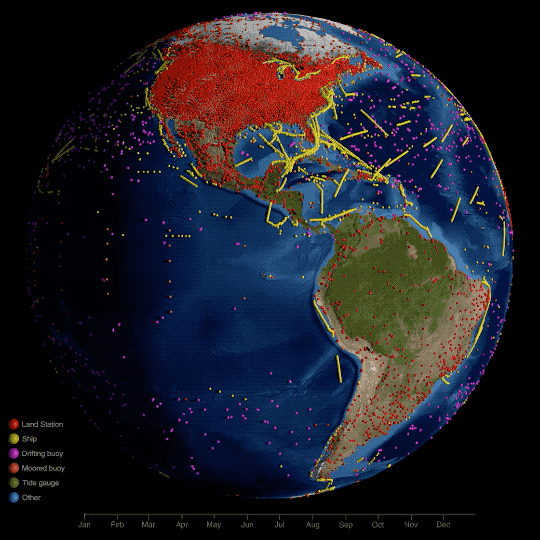
3. What do we mean by “on record”?
Technically, NASA’s global temperature record starts in 1880. NASA didn’t exist back then, but temperature data were being collected by sailing ships, weather stations, and scientists in enough places around the world to reconstruct a global average temperature. We use those data and our modern techniques to calculate the average.
We start in 1880, because that’s when thermometers and other instruments became technologically advanced and widespread enough to reliably measure and calculate a global average. Today, we make those calculations based on millions of measurements taken from weather stations and Antarctic research stations on land, and ships and ocean buoys at sea. So, we can confidently say 2023 is the warmest year in the last century and a half.
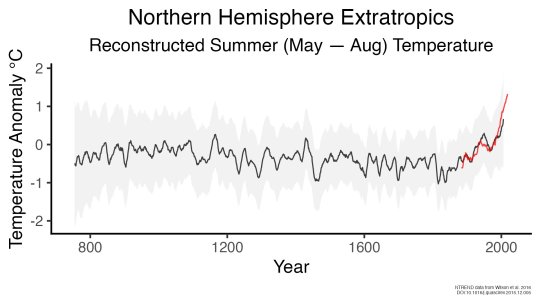
However, we actually have a really good idea of what global climate looked like for tens of thousands of years before 1880, relying on other, indirect ways of measuring temperature. We can look at tree rings or cores drilled from ice sheets to reconstruct Earth’s more ancient climate. These measurements affirm that current warming on Earth is happening at an unprecedented speed.
4. Why does a space agency keep a record of Earth’s temperature?
It’s literally our job! When NASA was formed in 1958, our original charter called for “the expansion of human knowledge of phenomena in the atmosphere and space.” Our very first space missions uncovered surprises about Earth, and we’ve been using the vantage point of space to study our home planet ever since. Right now, we have a fleet of more than 20 spacecraft monitoring Earth and its systems.
Why we created our specific surface temperature record – known as GISTEMP – actually starts about 25 million miles away on the planet Venus. In the 1960s and 70s, researchers discovered that a thick atmosphere of clouds and carbon dioxide was responsible for Venus’ scorchingly hot temperatures.

Dr. James Hansen was a scientist at the Goddard Institute for Space Studies in New York, studying Venus. He realized that the greenhouse effect cooking Venus’ surface could happen on Earth, too, especially as human activities were pumping carbon dioxide into our atmosphere.
He started creating computer models to see what would happen to Earth’s climate as more carbon dioxide entered the atmosphere. As he did, he needed a way to check his models – a record of temperatures at Earth’s surface over time, to see if the planet was indeed warming along with increased atmospheric carbon. It was, and is, and NASA’s temperature record was born.
5. If last year was record hot, why wasn’t it very hot where I live?
The temperature record is a global average, so not everywhere on Earth experienced record heat. Local differences in weather patterns can influence individual locations to be hotter or colder than the globe overall, but when we average it out, 2023 was the hottest year.
Just because you didn’t feel record heat this year, doesn’t mean you didn’t experience the effects of a warming climate. 2023 saw a busy Atlantic hurricane season, low Arctic sea ice, raging wildfires in Canada, heat waves in the U.S. and Australia, and more.
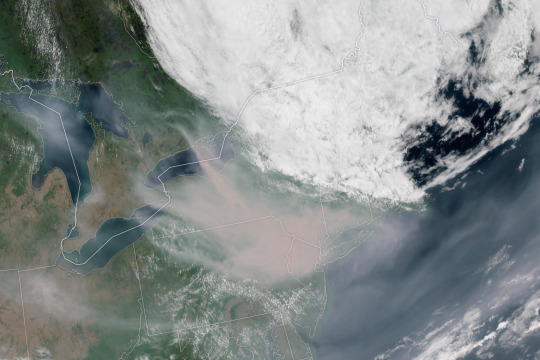
And these effects don’t stay in one place. For example, unusually hot and intense fires in Canada sent smoke swirling across the entire North American continent, triggering some of the worst air quality in decades in many American cities. Melting ice at Earth’s poles drives rising sea levels on coasts thousands of miles away.

6. Speaking of which, why is the Arctic – one of the coldest places on Earth – red on this temperature map?
Our global temperature record doesn’t actually track absolute temperatures. Instead, we track temperature anomalies, which are basically just deviations from the norm. Our baseline is an average of the temperatures from 1951-1980, and we compare how much Earth’s temperature has changed since then.
Why focus on anomalies, rather than absolutes? Let’s say you want to track if apples these days are generally larger, smaller, or the same size as they were 20 years ago. In other words, you want to track the change over time.
Apples grown in Florida are generally larger than apples grown in Alaska. Like, in real life, how Floridian temperatures are generally much higher than Alaskan temperatures. So how do you track the change in apple sizes from apples grown all over the world while still accounting for their different baseline weights?
By focusing on the difference within each area rather than the absolute weights. So in our map, the Arctic isn’t red because it’s hotter than Bermuda. It’s red because it’s gotten relatively much warmer than Bermuda has in the same time frame.
Want to learn more about climate change? Dig into the data at climate.nasa.gov.
Make sure to follow us on Tumblr for your regular dose of space!
3K notes
·
View notes
Text
I know my friends often think I’m paranoid for omitting pretty much every smart device outside of your standard phone and laptop from my life but honestly after playing Megaman Battle Network as a child, I know it’s only going to take a few very inspired people tired of corporate BS and experiencing a mental break to create a real world variation of World III.
Like. We’ve already heard of stories of people whose chastity cages got electronically hacked and force locked, and while that’s certainly creative, MMBN absolutely had way more simpler, and entirely possible crimes to commit.
Our fridges are online? Who controls that temperature. Maybe entire grocery stores will find their food either freezer burnt or spoiling.
Our thermostats? Well, it’d be a shame if somebody globally altered the temperature floor of the device to be boiling point.
Our cars are smart now? The literal first game had a chapter that merely took over traffic lights, it would only be easier to make the cars simply lock their users in and drive into each other.
Most data centers I’ve been to, even in multimillion dollar orgs, have dozens and dozens of servers protecting websites and the backup management processes are all handled by a single laptop that has a sticky note that says “do not close laptop” in a room that is virtually untouched for weeks at a time, except to check the temperatures of the cooling systems in the same room. As security, I can say I would have no idea if someone who came in for server maintenance was doing something suspicious or not, and even third party maintenance staff are often left to their own devices to work on perceived problems. Sure, they’re on camera, but so what if the next three people who work in the room are all going to be more third party maintenance staff?
Knowing that full well, I’m never going to buy a smart bidet for fear that it will end up with its water pressure settings altered, turning it into a power washer that ass blasts me to death.
199 notes
·
View notes
Text
"Two so-called “Celtic rainforests” in the UK are to be restored with a mixture of native planting and natural reforestation.
The hope is that they will provide rich habitats for dozens of species, improve groundwater quality and flood prevention, and allow residents and tourists to experience an exceptionally rare forest biome called temperate rainforest.
The most famous and largest temperate rainforests on Earth are found in the US states of Oregon and Washington, along Brazil’s Atlantic coast (known as the Atlantic Forest), and on New Zealand.

Pictured: Map of the global distribution of temperate rainforests. Source: Wikipedia
Britain, especially Wales, would have featured a certain amount of these Celtic rainforests in areas that experience high moisture content coming off the ocean, and low variations in annual temperatures.
One such place is Creg y Cowin on the Isle of Man, where 28 hectares (70 acres) of native Celtic rainforest will be planted by hand, and another 8 hectares (20 acres) left to regenerate naturally.
The Manx Wildlife Trust will be responsible for the project, and it anticipates “the return of oakwood dwellers such as wood warbler, pied flycatcher, and redstart, as well as raptors, owls, and woodland invertebrates.”
Historic agricultural dwellings called “tholtans” will be left on the landscape for their historical and cultural significance.
Elsewhere, in Gwynedd, North Wales, another 40 hectares (112 acres) of Celtic rainforest will be raised via a mixture of native planting and regeneration. The selected site is the peak and slopes of Bwlch Mawr, near the university town of Byrn Mawr.
“There’s real momentum now to restore and expand our amazing temperate rainforests, and it’s brilliant to see the Wildlife Trusts advancing their plans,” Guy Shrubsole, environmental campaigner and author of The Lost Rainforests of Britain, told the Guardian in the wake of the announcements."
-via Good News Network, 4/7/23
#uk#united kindgom#england#wales#gwynedd#rainforest#forest#temperate rainforest#rewilding#celtic#ecosystem#good news#hope
581 notes
·
View notes
Text
Excerpt from this story from EcoWatch:
The planet just had its hottest April ever recorded, extending a streak of 11 consecutive record-setting months, according to the European Union’s Copernicus Climate Change Service (C3S).
The monthly bulletin from C3S said the average global temperature was 1.61 degrees Celsius above the pre-industrial average — the highest for a 12-month period. It was also 0.73 degrees Celsius above the average from 1991 to 2020.
“El Niño peaked at the beginning of the year and the sea surface temperatures in the eastern tropical Pacific are now going back towards neutral conditions. However, whilst temperature variations associated with natural cycles like El Niño come and go, the extra energy trapped into the ocean and the atmosphere by increasing concentrations of greenhouse gases will keep pushing the global temperature towards new records,” said C3S Director Carlo Buontempo in the report.
For months, ocean surface temperatures broke records as well, leading scientists to ask whether a tipping point due to human activity had been reached, reported Reuters.
“I think many scientists have asked the question whether there could be a shift in the climate system,” said Julien Nicolas, senior climate scientist at C3S, as Reuters reported.
Zeke Hausfather, Berkeley Earth research scientist, has estimated that there is a 66 percent chance this year will be the hottest ever recorded, and a 99 percent likelihood of it being the second hottest, reported CNN. Hausfather added that the best estimate is that the global average temperature for 2024 will be a little higher than 1.5 degrees Celsius above pre-industrial levels.
54 notes
·
View notes
Text

Yeah, such records are increasingly frequent. But to normalize them would make us think there is notihng we can do to stop or reverse the current direction of the climate. There's plenty we can do and the cheapest & easiest thing is to vote.
New record daily global average temperature reached in July 2024
The Earth has just experienced its warmest day in recent history, according to the Copernicus Climate Change Service (C3S) data. On 22 July 2024*, the daily global average temperature reached a new record high in the ERA5 dataset**, at 17.15°C. This exceeds the previous records of 17.09°C, set just one day before on 21 July 2024, and 17.08°C, set a year earlier on 6 July 2023. Based on preliminary data released by C3S on 24 July, Monday 22 July was the hottest day in the ERA5 dataset, which begins in 1940. While the temperature on 21 July 2024 (17.09ºC) was almost indistinguishable from the previous record of 17.08ºC reached on 6 July 2023, the difference between these and the new record temperature (17.15°C) reached on 22 July is larger than typical differences in day-to-day variations among alternative datasets.
The trend is clear to everybody – except fossil fuel companies and their enablers.

Vote like the future of the planet depends on it. 🌎
#climate change#climate crisis#global warming#hottest day ever on earth#c3s#copernicus climate change service#fossil fuels#fossil fuel companies#donald trump#maga#republicans#election 2024#vote blue no matter who
9 notes
·
View notes
Text
Brazil leads international expedition to Antarctica
60-day mission to conduct first close coastal circumnavigation and study ice stability

Amid the global climate emergency, Brazil is set to lead a 60-day expedition around the coast of Antarctica, marking the closest circumnavigation of the continent ever undertaken. The journey, which brings together scientists from seven countries, will cover more than 20,000 kilometers of the Antarctic coast and analyze, among other factors, the dynamic stability of the ice sheet.
The team will measure variables such as temperature, salinity, and water density, in addition to collecting samples on biodiversity and the response of wildlife to climate variations. They will also study ocean circulation, pollution signals, and the role of the planet’s ice masses (cryosphere) in climate change. The delegation, which includes 61 scientists from Argentina, Brazil, Chile, China, India, Peru, and Russia, is scheduled to depart from the port of Rio Grande, Rio Grande do Sul, on November 22, with a return date set for January 25, 2025.
The mission will be coordinated by researcher Jefferson Simões, a professor at the Federal University of Rio Grande do Sul (UFRGS), who has participated in 27 Antarctic expeditions. He describes this as the most advanced program in Latin America: “The scientific expedition demonstrates Brazil’s leadership, particularly among Latin American countries, and is part of science diplomacy, which aims to solve common problems among different nations,” he states.
Continue reading.
4 notes
·
View notes
Text

Proba-3 will constantly measure Sun's energy output
Proba-3 is such an ambitious mission that it needs more than one single spacecraft to succeed. In order for Proba-3's Coronagraph spacecraft observe the sun's faint surrounding atmosphere, its disk-bearing Occulter spacecraft must block out the fiery solar disk. This means Proba-3's Occulter ends up facing the sun continuously, making it a valuable platform for science in its own right.
The sunward side of the Occulter therefore hosts a dedicated instrument that will maintain a continuous measurement of the sun's total energy output, known as the total solar irradiance, which is a essential variable for climate studies.
The shoebox-sized Davos Absolute Radiometer, DARA, has been supplied to the mission by the Physical Meteorological Observatory Davos, PMOD, in Switzerland.
"Researchers used to talk about the 'solar constant' but in fact it is always changing slightly," explains Wolfgang Finsterle, DARA Principal Investigator at PMOD. "And it's essential to keep track of the total solar irradiance, because it is the dominant energy input to the surface of the Earth.
"It amounts to something like 99.978% of the energy available on Earth, including the conserved solar energy stored in coal and oil. It drives all the dynamic processes of Earth's climate, so even the tiniest variations are hugely significant."
The mountain-based PMOD has been studying total solar irradiance for more than a century, initially with ground-based instruments and then from the 1970s deploying space-based radiometers to acquire a continuous dataset. The World Meteorological Organization has mandated PMOD as the World Radiation Centre to calibrate radiation measurements across global UN monitoring programs.
Wolfgang adds, "Total solar irradiance varies along with the 11-year cycle of solar activity, and one of the most obvious ways to look for long-term energy drift is to compare total solar irradiance between consecutive solar minimia.
"This requires a long time-series of data, ideally coming from multiple instruments because single radiometers will undergo degradation in sensitivity from the hard ultraviolet in the sun's rays they are continuously exposed to. That said any degradation is very gradual: the radiometer aboard the ESA-NASA SOHO solar observatory for instance, which was launched in back 1995, is still working satisfactorily."
DARA's basic operating principle is simple. The radiometer possesses a 5-mm diameter cavity made from black-painted silver, possessing low temperature emissivity. For 15 seconds at a time, sunlight warms the interior of the cavity, then a shutter blade automatically closes at its entrance.
For the next 15 seconds, electric heat maintains the cavity's previous temperature—and the energy needed to maintain this temperature is extrapolated to the unit of total solar irradiance, which is watts per meter squared.
This process continues for the entire lifetime of the instrument—the actuated shutter design employed in DARA has been tested for millions of openings and closings in PMOD's vacuum chamber.
"DARA is an improvement on previous radiometer designs with an optimized cavity design to minimize unwanted straylight and a multi-channel measuring system for self-calibration," adds Wolfgang. "This generation of instrument also possesses a fully digital control loop, allowing the possibility of experimenting with higher frequency observations.
Two versions of this radiometer design have already flown, notes Werner Schmutz of PMOD, who oversaw its development: "A compact version called CLARA flew on Noway's NorSat-1 CubeSat in 2017, remaining operational to this day, while a previous DARA is serving aboard the Chinese FY-3E weather satellite, launched in 2021. So we have high confidence in the design, which can operate whenever the Proba-3 Occulter is pointed at the sun within half a degree of accuracy."
The main difference between Proba-3's DARA and previous radiometers will be its very elongated orbit, which will carry it 60 000 km above Earth's surface. DARA can automatically adjust to slight changes in the size of the solar disk based on how far it is away—which are also due to Earth's yearly elliptical orbit around the sun. All the radiometer needs to know is its position in space and its data gathering compensates for the shift.
3 notes
·
View notes
Text
Silly Sally
Neil Golan posts:
CAUSES OF CLIMATE CHANGE…… J Mcgrath 7 Dec 2020
IF YOU THINK HUMANS CAN CONTROL CLIMATE, HERE ARE SOME OF THE NATURAL CAUSES THAT YOU WILL HAVE TO OVERCOME:
NATURES EFFECTS:
1. SUNSPOTS – Every 11 years elevated sunspot activity occurs on the Sun and is transmitted to earth as heat.
2. PRECESSION – The Earth’s axis moves in a cycle that lasts 26,000 years during which time it varies by 23 degrees from the neutral axis which is perpendicular to the Suns rays. This changes the locations of deserts and forests.
3. ECCENTRICITY OF EARTHS ORBIT - Changes the distance from the Sun to Earth. This varies the amount of heat the Earth receives from the sun. It warms and cools the Earth.
4. METEORS OR COMETS – Are plentiful but every so often can cause devastating changes in the Earth when they impact. One has been blamed for the extinction of the Dinosaurs at least in part.
5. VOLCANOS - Caused by tectonic plate movements, occur in unpredictable ways and have been known to create extreme global temperature variations. The eruption of Tambura caused the 1815 “Year without a Summer” with effects that lasted 3 years. There are approximately 1500 active volcanoes, 500 of which have erupted in modern times, and 60 of which are currently active in approx. 60 countries around the world. Yellowstone is a Super volcano that will really change the climate when it blows again.
6. SHIFTS IN THE EARTH’S MOLTEN CORE…. In unpredictable ways. Changes the magnetic poles and moves them approximately 35 miles per year, and can lead to pole reversals every 7000 years.
7. GULFSTREAM (ancillary)– And other currents are generally consistent but variations of hundreds of miles can cause huge environmental changes.
8. JET STREAM SHIFTS (ancillary). They move heat energy in unpredictable ways.
9. EL NINA & EL NINO (ancillary)- Warming and Cooling effects of atmosphere in the Pacific Ocean.
10. UNPREDICTABLE ICE AGES (ancillary).
11. CONTINENTAL DRIFT – over the very long term.
DID I MISS ANYTHING?
12 notes
·
View notes
Text
What are the main reasons people choose instant coffee?
People choose instant coffee for a variety of reasons, and these factors contribute to its widespread popularity across the globe. Here’s a detailed look at the main reasons why instant coffee is a go-to choice for many:
Convenience Ease of Preparation: Instant coffee is incredibly easy to make. All you need is hot water, and within seconds, your coffee is ready to drink. There's no need for brewing equipment, filters, or even a coffee maker. This simplicity is especially appealing for busy individuals who don’t have time to prepare coffee from scratch. Portability: Instant coffee is available in small, lightweight packets or jars, making it easy to carry around. Whether you're at work, traveling, or camping, you can always have your favorite coffee with you without needing to pack any equipment.
Speed Quick Brewing: Unlike traditional coffee, which requires several minutes to brew, instant coffee dissolves in hot water almost instantly. This speed is perfect for those who are always on the go or for anyone who needs a quick caffeine fix during a busy day.
Affordability Cost-Effective: Instant coffee is generally more affordable than ground coffee or coffee beans. Since it requires less processing and packaging, it’s often available at a lower price point, making it an economical choice for many households. Longer Shelf Life: Instant coffee has a longer shelf life compared to ground coffee, which means you can buy it in bulk and store it for a longer period without worrying about it going stale. This adds to the overall cost-effectiveness.
Variety of Flavors Diverse Options: Instant coffee comes in a wide range of flavors, strengths, and blends. From classic black coffee to flavored varieties like vanilla, hazelnut, and mocha, there’s something to suit every taste preference. This variety allows coffee lovers to experiment and find their perfect cup. Customization: Instant coffee is easy to customize. You can adjust the strength by simply adding more or less coffee powder, and you can easily mix in milk, creamers, sugar, or flavored syrups to create your own unique blend.
Consistency Reliable Taste: Instant coffee offers consistent taste and strength in every cup. Unlike brewed coffee, where variations in brewing time, temperature, and coffee-to-water ratio can affect the flavor, instant coffee provides a uniform taste experience. This reliability is especially important for those who prefer a consistent coffee experience every day.
Less Waste Minimal Cleanup: With instant coffee, there’s no need to deal with coffee grounds, filters, or the mess that comes with brewing traditional coffee. This reduces waste and makes cleanup a breeze, appealing to those who value simplicity and sustainability in their daily routine.
Availability Global Reach: Instant coffee is widely available in supermarkets, convenience stores, and online, making it accessible to people in almost every part of the world. This global availability ensures that no matter where you are, you can find instant coffee to suit your needs. Adaptability to Local Markets: Many instant coffee brands tailor their products to suit the tastes and preferences of different regions. Whether you prefer a stronger brew, a sweeter taste, or a specific flavor, chances are you can find an instant coffee that matches your preferences.
Health Benefits Antioxidant Content: Instant coffee contains antioxidants that can help protect your body from free radicals, which are harmful molecules that can lead to chronic diseases. While it might not have as many antioxidants as freshly brewed coffee, it still offers a decent amount, making it a healthier choice than other caffeinated beverages. Lower Caffeine Content: For those who are sensitive to caffeine, instant coffee often has a slightly lower caffeine content than brewed coffee. This makes it a suitable option for people who want to enjoy coffee without experiencing the jittery effects of too much caffeine.
Environmental Impact Reduced Resource Usage: Instant coffee typically requires fewer resources to produce, store, and transport compared to whole bean or ground coffee. It also uses less packaging, especially when bought in bulk. This can result in a lower overall environmental footprint, making it a more sustainable choice for environmentally conscious consumers.
Cultural Influence Cultural Norms: In some cultures, instant coffee is a deeply ingrained part of daily life. It might be the first type of coffee people are introduced to, and it remains a staple in households and workplaces. This cultural familiarity can make instant coffee a preferred choice for many. Marketing and Branding: Many instant coffee brands have strong, recognizable identities and marketing campaigns that resonate with consumers. These brands often create a sense of nostalgia or connection, further encouraging people to choose instant coffee over other types. Conclusion In summary, people choose instant coffee primarily for its convenience, speed, and affordability. It offers a consistent and customizable coffee experience with minimal waste and environmental impact. The wide variety of flavors, global availability, and cultural significance further add to its appeal. Whether you're a busy professional, a traveler, or simply someone who enjoys a quick and reliable cup of coffee, instant coffee provides a practical and satisfying solution.
2 notes
·
View notes
Text
The Four Seasons
Aka: Things About Jack and Mother Nature That I Totally Made Up But Drive Me Absolutely CRAZY BATSHIT INSANE. For Mother's Day!
Jack learned how to avalanche surf from her. He saw her surf down a massive rockslide once and went I WANNA DO THAT! SHOW ME NOW!!
The one and only ability that they share in its entirety is Wind Shifting (turning one's form into wind/air fronts). Mother Nature has a lot of variations of this ability, with leaves and petals and clouds and such, while Jack just has the snowy version.
And this is the first ability she ever taught him, out of necessity for fast travel when taking over seasonal duties.
They used to go for casual flights like this, and the whispering winds myth came about from these two talking while flying.
The other very small thing that they share is that Jack can actually hear Evergreens! In the same way that MN can hear all plants/flora, Jack has the same thing but only with evergreens, and very very faintly with mountains. But only if he sits up at a certain altitude where it snows, and only then it's more like a murmur.
Using the wind power thing, Jack has actually broken MN's wind speed record ONCE (1). He got real buck wild during the Blizzard of 1934 in Washington that year and capped out at 231 mph.
But he was such an ANNOYING SORE WINNER about it for actual DECADES that Mother Nature shut him right the hell up and beat THAT record with her own 253 mph winds in Australia and 1996. She still reigns supreme to this day.
Father Time sees a lot of similarities between the two and often regards both their intelligence and ambition as the most obvious to him.
Mother Nature got Jack into music/singing. There's a whole passage about how this came about reserved for the CC finale but it's my favorite thing.
They both cannot STAND the groundhog. He's a magical enigma and buts in with his own weather advice and annoy the both of them to no end.
When Jack was created Mother Nature's temperature regulation went kinda out of whack, so without any winter magic in her system she tends to run warm and is prone to heat flashes and overheats easier than before (Exacerbated by global warming).
She's the one that got him into music/singing when he was still very young, before he could permafrost. He got hooked on it as an art form/hobby from the beginning and I have a little passage about it right here! It's meant to show up somewhere in the CC finale but it's actually my favorite thing.

She doesn't sing very much at all in public, not for an audience at any rate. It’s mostly reserved as a self-soothing habit she indulges in when alone. But the crowd tonight is amped, and they haven't heard her sing in centuries, in this instance it would be impossible to say no. The soft piano and building orchestrals cue her intro and the collective skins of all who were present ignited with goosebumps. Shivers up spines and a pang in their chests. The heavens open. The instrumental in the background gives way and makes room for her voice. Confidently ringing out to all corners of the tower with a powerful vibrato. But it also carries a sad current of sentimentality that softens the edge just a bit. Lucy and Charlie were just as enthralled as the rest of the public, not even daring to utter a noise during any of this. But Jack standing next to them was frozen in place, haunted looking. A deep and ancient recognition lighting his eyes, a voice from his “youth” he never truly forgot but hasn't heard in a long time. Too long. Hearing every word as if it was the only noise in the room, forgetting where he actually was for just a moment. An instant, catapulted back in time. Shaking him to his severed core. He went looking for Mother Nature for a reason that has been lost to him for millennia, went searching for her in the meadows she frequents but he found Father Time instead. He was sitting on the ground with his back against a large birch tucked in the tree line, his eyes peacefully closed. Jack was not afraid about ruining his moment and was going to ask where the council head had gone to but was promptly shushed by Father Time’s staff waving at him. He didn't say anything but put a single finger to his lips and mimed for him to listen. It took him a few attempts at starting a sentence before he finally kept quiet. And when he stopped, and strained, this was the voice he heard. Dulled by some innocuous distance away, but a voice like liquid gold that resonated with something intrinsic in his being that he could not explain. With only the birds and the breeze as her accompaniment. A voice, a song that he couldn't forget if he tried. He remembers sitting with Father Time and just, listening to her sing. A habit that Mother Nature couldn't ever shake and a guilty pleasure that Father Time had developed. To sit and listen to her when she was harmlessly unaware. Jack remembers that moment, that single instance of secretly listening to the woman sing, clear as still water. One never really forgets a moment such as that when their mother is the central pillar of their whole world. The awe of the moment crashes into him again in the present, causing his heart to skip a beat when the instruments fade back in. But the scariest thing was how unchanged she sounds. His memory of a time he used to wish long forgotten was still perfectly correct. She sounds incredible.
#nonart#text post#hc#the santa clause 2#the santa clause 3#mother nature#jack frost#CC#musings#its thinking about THEM hours#there's just SOMETING about this potential dynamic#that hurts my soul in a good way#i also really enjoy that a good chunk of this fandom#has decided that this man has IMMENSE mommy issues#clocked his ass
4 notes
·
View notes
Text
Why Isn’t Every Year the Warmest Year on Record?
This just in: 2022 effectively tied for the fifth warmest year since 1880, when our record starts. Here at NASA, we work with our partners at NOAA to track temperatures across Earth’s entire surface, to keep a global record of how our planet is changing.
Overall, Earth is getting hotter.
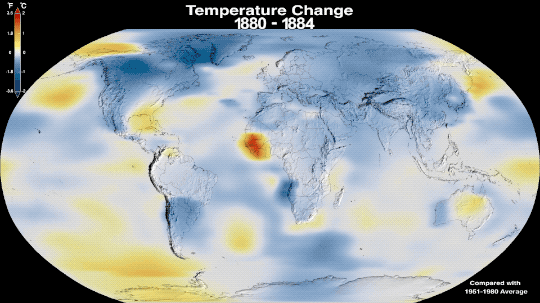
The warming comes directly from human activities – specifically, the release of greenhouse gases like carbon dioxide from burning fossil fuels. We started burning fossil fuels in earnest during the Industrial Revolution. Activities like driving cars and operating factories continue to release greenhouse gases into our atmosphere, where they trap heat in the atmosphere.

So…if we’re causing Earth to warm, why isn’t every year the hottest year on record?
As 2022 shows, the current global warming isn’t uniform. Every single year isn’t necessarily warmer than every previous year, but it is generally warmer than most of the preceding years. There’s a warming trend.
Earth is a really complex system, with various climate patterns, solar activity, and events like volcanic eruptions that can tip things slightly warmer or cooler.
Climate Patterns
While 2021 and 2022 continued a global trend of warming, they were both a little cooler than 2020, largely because of a natural phenomenon known as La Niña.
La Niña is one third of a climate phenomenon called El Niño Southern Oscillation, also known as ENSO, which can have significant effects around the globe. During La Niña years, ocean temperatures in the central and eastern Pacific Ocean cool off slightly. La Niña’s twin, El Niño brings warmer temperatures to the central and eastern Pacific. Neutral years bring ocean temperatures in the region closer to the average.

El Niño and La Niña affect more than ocean temperatures – they can bring changes to rainfall patterns, hurricane frequency, and global average temperature.
We’ve been in a La Niña mode the last three, which has slightly cooled global temperatures. That’s one big reason 2021 and 2022 were cooler than 2020 – which was an El Niño year.
Overall warming is still happening. Current El Niño years are warmer than previous El Niño years, and the same goes for La Niña years. In fact, enough overall warming has occurred that most current La Niña years are warmer than most previous El Niño years. This year was the warmest La Niña year on record.

Solar Activity
Our Sun cycles through periods of more and less activity, on a schedule of about every 11 years. Here on Earth, we might receive slightly less energy — heat — from the Sun during quieter periods and slightly more during active periods.

At NASA, we work with NOAA to track the solar cycle. We kicked off a new one – Solar Cycle 25 – after solar minimum in December 2019. Since then, solar activity has been slightly ramping up.
Because we closely track solar activity, we know that over the past several decades, solar activity hasn't been on the rise, while greenhouse gases have. More importantly, the "fingerprints" we see on the climate, including temperature changes in the upper atmosphere, don't fit the what we'd expect from solar-caused warming. Rather they look like what we expect from increased greenhouse warming, verifying a prediction made decades ago by NASA.
Volcanic Eruptions
Throughout history, volcanoes have driven major shifts in Earth’s climate. Large eruptions can release water vapor — a greenhouse gas like carbon dioxide — which traps additional warmth within our atmosphere.
On the flip side, eruptions that loft lots of ash and soot into the atmosphere can temporarily cool the climate slightly, by reflecting some sunlight back into space.
Like solar activity, we can monitor volcanic eruptions and tease out their effect on variations in our global temperature.
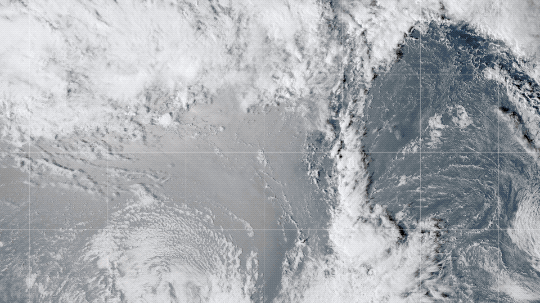
At the End of the Day, It’s Us
Our satellites, airborne missions, and measurements from the ground give us a comprehensive picture of what’s happening on Earth every day. We also have computer models that can skillfully recreate Earth’s climate.
By combining the two, we can see what would happen to global temperature if all the changes were caused by natural forces, like volcanic eruptions or ENSO. By looking at the fingerprints each of these climate drivers leave in our models, it’s perfectly clear: The current global warming we’re experiencing is caused by humans.
For more information about climate change, visit climate.nasa.gov.
Make sure to follow us on Tumblr for your regular dose of space!
3K notes
·
View notes
Text
Oceanic Appreciation
Super self indulgent and projecting onto mc and Levi here but I hope you like it!
Warnings: mc+Levi have a stutter, mc repeats the same word two times in a row sometimes, nd coded mc+Levi, they/them mc, Levi misspells from speedtyping, Levi calls mc Henry once
As MC lays on the floor of their room, thinking about everything and nothing in a chaotic jumble of thoughts, they have an urge to ramble about something to their favourite demon; Leviathan.
‘ener me was stupi- Oh my GOD I HAVE TO TELL LEVI ABOUT MY FAVOURITE JELLY!!!’ MCs thoughts are focused on one thing, and that thing is telling Levi everything about their favourite type of jellyfish.
And so, MC sits up fast and sends their best friend a text.
Silly Nerd !!!! (Levi)
__________________________________________________________________________________
Hey Levi!! Could I come to
your room later? I wanna
hangout 10:57 A.M
??!!
You really wanna
hangout with me??
Uhh ok what time!!
Around 1:20 maybe?? Is
that okay?
Yeaj perfevt!!
**yeah perfect
lmao
Anyway thanks Levi!! C u soon! Read at 11:00 A.M
__________________________________________________________________________________
As MC and Levi end their quick chat, MC stands up. They switch to their preferred music app (Levi hacked it onto their D.D.D for them), connect their headphones to it, and put on their favourite playlist. MC walks over to their desk. They pull open one of the drawers, and take their sketchbook out.
Picking up their pencil and opening the book, MC starts to draw some jellyfish, and many variations of it; be it human versions, anatomically correct, or cartoony ones.
MC does this for two hours, sometimes spacing out or getting lost in scenarios with the music. And when they look over at their D.D.D, it’s 1:00 P.M, and MC feels like moving around.
MC stands up, putting the book away, and leaves their room to walk around the HoL for a bit, and s stops by the kitchen to get water, as their throat feels uncomfortably dry. After finishing their cup of water, they walk out of the kitchen and pull out their phone to check the time, hurrying quietly over to Levi’s door to be there two minutes before 1:20 P.M.
And MC waits, fidgeting with their fingers patiently and excitedly.
‘20… 30…. 50… 1:20!! Okay now you can knock MC!!’
They knock, the exact way they always do: one, one, two, one. And Levi opens the door immediately after.
“O-oh hey Henry! I didn’t think you’d actually show up, LOL! Anyway… what game did you want to play?” Levi exclaims.
“Actually Levi, I wanted to talk to you about something…” MC realizes how upsetting that sounds, “OH! OH NO, it’s not- it’s not a bad thing don’t worry!!” They sputter out, trying to reassure Levi that they weren’t mad. “I just wanted to tell you about my favourite jellyfish! Is- is that okay??” They say nervously.
“… Your favourite jellyfish!? LOL MC I know everything about them! I made them!!” He brags. The slight blush he has gives away that he’s flattered MC likes creatures of his element, though. He continues, “But sure, tell me all that humans know about your favourite one. Hearing it from my player two would be epic!!”
And tell him everything, MC did.
“My favourite has a few names, but is mainly known as a ‘Moon Jellyfish’, it’s very cute and is both the easy- the easiest to take care of AND its stings can’t be felt by humans, making it the most har- harmless jellyfish to humans. They usually travel alone, but on occasion move in groups called ‘a Smack’. Also!! Also, thanks to both Global Warming on Earth and water poll- pollution, the water temperatures are hotter, making it easier for them to live freely. Unfortunately, these little guys are targets of both sea,,, air, and land predators, making their lives shorter than they already are. The longest they usually ever live up to is one year. And they can asexually reproduce! They- they have a little clover-like design on their top and can touch by that to reproduce. They’re super cute and I love them so much!!”
Levi looks almost zoned out, with how intense he’s staring at MC. But then he says “Woah, MC… You know so much about them!! I’m happy you like jellyfish! I can’t believe it!!!! Can I- Can I tell you about my favourite kind of snakes??” He finishes excitedly.
“YES!!!!” MC says giddily, happy to be able to bond with him.
The two went back and forth sharing their interests and fixations, up into late hours of the night (switching to playing games while talking) and eventually fell asleep, controllers in hand, and game temporarily abandoned for the night.
#levi gets his own post <33#obey me leviathan#levi x reader#om! leviathan#leviathan x reader#leviathan avatar of envy#leviathan x mc#shall we date leviathan#I’m projecting on them both heavily#me if levi was real 🤗🎉#i need a levi in my life fr </3
19 notes
·
View notes
Text
Epoxy Insulators in the Rail Industry: Meeting the Demands of Modern Transportation
Within the domain of contemporary transportation, the railway sector assumes a crucial function in facilitating the efficient and sustainable movement of individuals and commodities. In order to effectively meet the dynamic requirements of the business, there exists a perpetual necessity for innovation and enhancement across all facets of rail infrastructure. Epoxy insulators have evolved as a significant component that plays a critical role in enhancing the reliability and efficiency of rail systems. Ensure uninterrupted rail operations with the durability of epoxy insulators manufactured and supplied by Radiant Enterprises - the best Epoxy insulator for third rail manufacturer in India!
This blog post aims to examine epoxy insulators and their ability to fulfil the requirements of contemporary transport within the rail sector.

Understanding the Role of Epoxy Insulators:
Epoxy insulators are a category of electrical insulators employed for the purpose of isolating and providing structural support to electrical conductors, hence impeding the passage of electric current through them. Electrical systems are frequently employed throughout several industries, such as the railway sector, with the primary objective of guaranteeing the secure and dependable functioning of these systems. Within the rail sector, these insulators are predominantly employed in railway electrification systems, fulfilling many essential roles.
· High Voltage Insulation:
The provision of high voltage insulation is a key function of epoxy insulators within the rail sector. The electrification of rail systems on a global scale has led to a growing dependence on high-voltage overhead lines as the primary source of power for electric locomotives. Epoxy insulators play a crucial role in preserving a secure distance between high-voltage lines and the structures that support them, thereby mitigating electrical leakage and safeguarding the well-being of passengers.
· Mechanical Strength:
Railway systems are exposed to adverse climatic conditions, encompassing severe temperature variations, vibrations, and mechanical strain. Epoxy insulators are widely recognised for their remarkable mechanical strength and resilience, rendering them highly suitable for deployment in railway applications. The electrical infrastructure is designed to endure the demanding conditions of continuous train movements, hence preserving its integrity and functionality.
· Corrosion Resistance:
Corrosion resistance is a critical factor to consider in railway infrastructure due to its frequent exposure to moisture, chemicals, and various corrosive substances. Epoxy insulators are engineered to possess a high level of corrosion resistance, hence guaranteeing an extended operational lifespan and reducing the need for frequent maintenance. The corrosion resistance of rail systems is of utmost importance as it plays a critical role in ensuring uninterrupted operation, hence reducing both downtime and repair expenses. Experience the reliability of electrical solutions. Connect with Radiant Enterprises to Import Epoxy insulators in France!
· Lightweight Design:
Contemporary rail systems are consistently endeavouring to minimise weight and enhance energy efficiency. Epoxy insulators are preferred due to their lightweight construction, which enhances the overall effectiveness of the system. The decreased weight of these insulators results in reduced energy consumption and enhanced sustainability, so they match seamlessly with the objectives of contemporary transportation.
· Customization and Versatility:
Epoxy insulators have the capability to be customised according to the specific demands of railway systems, hence enabling flexibility in both design and implementation. Epoxy insulators provide the capability to be tailored in order to effectively address the distinct requirements of various projects, including high-speed rail lines, commuter train networks, and freight rail systems. The ability to adapt is crucial in order to ensure optimal operation of rail systems in diverse settings.
· Safety and Reliability:
The rail sector places utmost importance on safety, and the utilisation of epoxy insulators is integral to guaranteeing secure operations. These insulators effectively mitigate the potential hazards and operational disturbances in train services by offering dependable insulation and preventing electrical failures. Passengers and operators may place trust in the safety and reliability of electric train networks. Empower your railway projects with the best quality and durable 25 KV epoxy insulators. Get in touch with Radiant Enterprises - one of the most trusted 25 KV Epoxy Insulators for Railways manufacturers in India to learn more!
Longevity and Cost Efficiency:
The strategic decision for rail operators is to invest in durable and long-lasting components, considering longevity and cost efficiency. Epoxy insulators possess the advantageous characteristic of having an extended operational lifespan, hence mitigating the necessity for frequent replacements and the subsequent financial burdens associated with such replacements. The extended lifespan of these options renders them a financially advantageous selection over time, thereby harmonising with the fiscal limitations commonly associated with railway initiatives.
Final Thoughts:
Epoxy insulators have become an essential component in the rail sector, effectively addressing the requirements of contemporary transportation. The suitability of these systems for railway electrification is attributed to their capacity for high voltage insulation, resilience in challenging climatic circumstances, resistance to corrosion, and provision of customisation choices. In addition, the lightweight nature of these designs serves to enhance energy efficiency and promote sustainability, so they match seamlessly with the objectives of the business.
The increasing development and growth of the rail sector necessitates the significant involvement of epoxy insulators in guaranteeing the dependability, security, and effectiveness of electric train systems. Through the use of cutting-edge technologies such as epoxy insulators, the railway sector is well-positioned to confront forthcoming difficulties and maintain its pivotal role in contemporary transportation. From power distribution to industrial applications, Imports cycloaliphatic epoxy insulators in France from a trusted manufacturer and supplier, Radiant Enterprises!
#Epoxy insulator for third rail manufacturer in India#Imports Epoxy insulators in France#25 kv epoxy insulator for railways manufacturers In India#Imports cycloaliphatic epoxy insulators in France
7 notes
·
View notes
Text
Excerpt from this story from Mongabay Environmental News:
A NASA study analyzed the future action of six climate variables in all the world’s regions — air temperature, precipitation, relative humidity, short- and long wave solar radiation and wind speed — if Earth’s average temperature reaches 2° Celsius (3.6° Fahrenheit) above preindustrial levels, which could occur by 2040 if emissions keep rising at current rates.
The authors used advanced statistical techniques to downscale climate models at a resolution eight times greater than most previous models. This allows for identification of climate variations on a daily basis across the world, something essential since climate impacts unfold gradually, rather than as upheavals.
The study found that the Amazon will be the area with the greatest reduction in relative humidity. An analysis by the Brazilian space agency INPE showed that some parts of this rainforest biome have already reached maximum temperatures of more than 3°C (5.4°F) over 1960 levels.
Regardless of warnings from science and Indigenous peoples of the existential threat posed by climate change, the world’s largest fossil fuel producers, largely with government consent, plan to further expand fossil fuel exploration, says a U.N. report. That’s despite a COP28 climate summit deal “transitioning away from fossil fuels.”
In view of the current nonstop rise in greenhouse gas emissions responsible for intensifying climate change, NASA researchers this year posed two key questions: When will the planet’s temperature likely reach an annual average of 2° Celsius (3.6° Fahrenheit) above preindustrial levels? And what will the global climate look like in great detail all over the world at that temperature?
Disturbingly, their findings indicate that a 2°C increase could be reached between 2041 and 2044 (under higher and lower emission scenarios, respectively) in comparison with the preindustrial period (1850-1900). The planet is currently at 1.15°C (2.07°F) above 19th century levels, with most of this warming occurring since 1975.
A rise above 2°C could put Earth on track for catastrophic climate change impacts, according to the 2023 report by the U.N. Intergovernmental Panel on Climate Change.
To investigate the potential multiple effects of a 2°C planet, scientists at the NASA Earth eXchange analyzed the projections of 35 of the world’s leading climate models with a very high resolution that gives results for areas of just 25 square kilometers (9.6 square miles). Many climate models currently use a far coarser resolution of 200 km2 (77 mi2). NEX fine-scaling allowed for estimated climate impact projections on both a local and regional scale, and even on a daily basis.
“If merged into a monthly average, a few days projected to be dangerously hot and humid could get lost in the numbers, concealing the risk for human lives,” explained study lead author Taejin Park, a researcher at NASA’s Ames Research Center. “Finer-scale information can help identify variations in projected climate change that may be overlooked, so leading to significant impacts on planning and decision-making.”

In the 2040s, global mean near-surface air temperature over land is projected to increase 2.33-2.79°C (4.2-5°F), compared with the baseline period 1950–79. Greenland, Alaska, Canada, Northern Europe and Asia are projected to reach above a 3°C (5.4°F) increase in annual temperature. Image courtesy of NASA/Taejin Park.

If NASA’s projections are correct, a precipitation increase will occur over much of the northern hemisphere, especially in southeastern Greenland, but also in western and eastern Africa and South Asia, among other places. The Amazon Basin, on the other hand, will see a major decrease in precipitation. Dry regions such as Southern Africa, the North American Southwest and the Mediterranean also could see a precipitation decline. Image courtesy of NASA/Taejin Park.

After 2040, most regions of the world are expected to have more days with extreme heat stress, with heat especially pronounced in the Amazon, Central and Eastern North America, the Mediterranean and Eastern and Northern Asia. Heat stress can be devastating to wildlife, plants and of course, people. Image courtesy of NASA/Taejin Park.

Under a moderate emission scenario, Western and Central North America, the Amazon, the Mediterranean and South Africa will be at higher risk of fires in the 2040s, compared with 1950-79. Image courtesy of NASA/Taejin Park.
6 notes
·
View notes